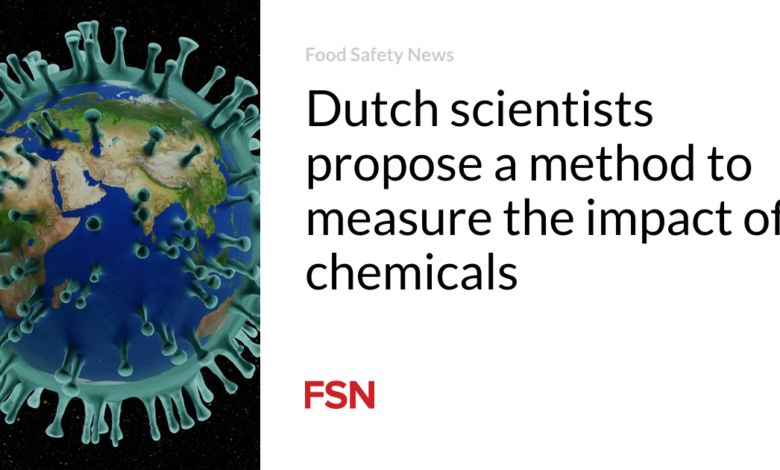Dutch scientists propose a method to measure the impact of chemicals

Scientists have said applying a technique often used to assess the disease burden by pathogens to chemicals is “feasible but complicated.”
The Dutch National Institute for Public Health and Environment (RIVM) investigated the possibility of using the approach to estimate and compare the health impacts of foodborne chemicals.
The health impacts of chemicals in food can be represented in terms of health loss (burden of disease). The burden of disease is expressed in Disability-Adjusted Life Years (DALYs). DALYs indicate the loss of healthy years of life due to disease or premature death. In this way, the effects of chemicals can be compared with one another. The DALY approach has been used regularly to quantify the disease burden caused by foodborne pathogens.
Food can contain chemicals that have harmful effects on human health. The severity of these effects can vary from headaches to serious illnesses. If the different effects can be compared, policymakers can then use this knowledge to make informed choices to reduce people’s contact with harmful chemicals in food.
Calculating the burden of disease
In 2021, the World Health Organization (WHO) proposed an approach to calculate the disease burden from chemicals in food. However, the method was not explained in detail, and DALYs were calculated in different ways. This makes it difficult to compare the DALYs from these studies.
The DALY methodology contains various parameters. Choices can be made whether to in- or exclude certain parameters and different methods can be used to obtain results. This makes it challenging to conclude whether differences in DALY estimations were due to actual differences in population health or were the result of methodological choices.
RIVM proposed a stepwise bottom-up incidence-based DALY approach to calculating the burden of disease due to chemicals in food. The proposed approach stated each step of the calculation, including possible options and difficulties.
This method is in line with WHO recommendations but needs to be validated and tested. It is not easy, and there must be enough data to make the calculations. However, it brings a standard calculation on the burden of disease caused by chemical substances in food closer.
In total, 51 studies were identified that calculated DALYs from exposure to chemicals in food and/or drinking water. This resulted in 21 different groups of chemicals being investigated.
Foodborne chemicals that are potentially harmful to health can be divided into two main groups: those that occur naturally in foods and those that do not. The latter can be further divided into chemicals that are intentionally added, result from deliberate human action, or are unintentionally put into food. The first group includes allergens, mycotoxins, and plant toxins. The second group features food additives, pesticide residues, and process contaminants.
Future study
Establishing a direct link between exposure to a chemical and the onset of a disease is complex. Health outcomes often have multiple causes, and symptoms may only appear long after exposure.
RIVM said estimates of the burden of disease due to foodborne chemicals may be useful in informing food safety policy and helping establish priorities for interventions to reduce the burden.
“As a future plan, conducting a proof-of-concept study in which DALYs of different foodborne chemicals are calculated according to the proposed approach in this review for the Netherlands is recommended. It is advised to choose a set of chemicals that have been extensively researched, which means they are data-rich, and their exposure-health outcomes associations are widely recognized. Notably, while the method is interesting and informative, its suitability as the best approach for ranking the risk of foodborne chemicals requires further investigation.”
(To sign up for a free subscription to Food Safety News, click here.)



